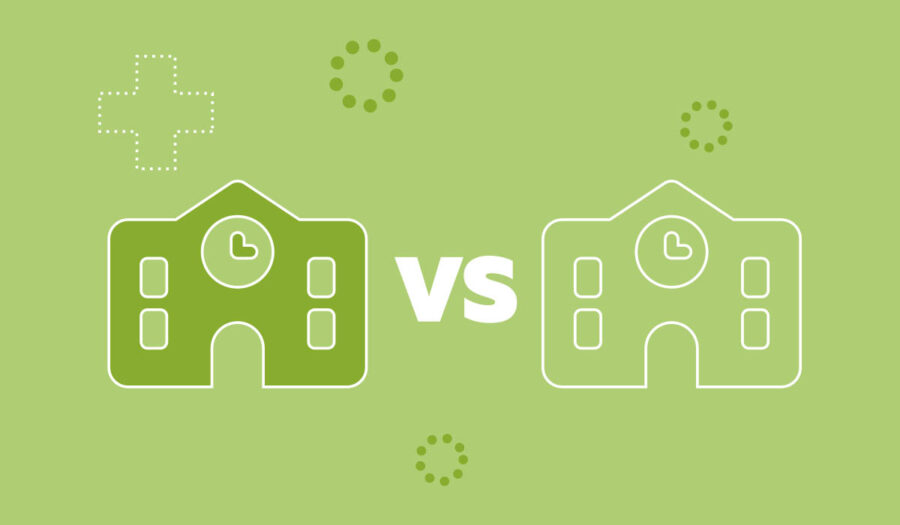Education plays a pivotal role in shaping the lives of young individuals, and in the United Kingdom, the choice between grammar schools and comprehensive schools has long been a topic of debate.
Grammar schools, with their selective admission processes, and comprehensive schools, which aim to provide education for all, offer distinct approaches to learning and have sparked discussions on fairness, academic excellence, and social mobility.
We will compare these two kinds of UK secondary schools while examining key aspects such as academic performance, social inclusion, and long-term outcomes.
With the limited number of places in grammar schools and the exceptional demand, we recommend that applicants begin 11 Plus preparations as early as Year 4.
Here are some of our suggested effective study plans for 11 Plus success.
Excellent Academic Performance in Grammar Schools
One of the primary arguments in favour of grammar schools is their reputation for producing excellent academic results.
Advocates argue that the selective admission process ensures a higher concentration of academically gifted students, leading to an environment conducive to higher achievement.
Studies have shown that grammar school students often outperform their peers in national exams, and these institutions have a track record of sending a significant number of students to top universities.
On the other hand, comprehensive schools take pride in their commitment to providing a diverse and inclusive educational experience.
They cater to a broader range of abilities and backgrounds, emphasising equal opportunities for all students.
While comprehensive schools may not consistently achieve the same exceptional results as grammar schools, they argue that they excel in fostering well-rounded individuals, nurturing talents beyond academic prowess, and developing essential life skills.
Social Inclusion in the Schools
Critics of grammar schools often raise concerns about social inclusion, claiming that the selective admission process perpetuates social divides and exacerbates educational inequalities.
The argument is that children from more privileged backgrounds tend to have better access to resources, such as tutoring or test preparation, giving them an advantage in the highly competitive 11 Plus exam.
Consequently, children from disadvantaged backgrounds may face barriers in gaining admission to grammar schools, limiting their opportunities for upward social mobility.
Comprehensive schools, in contrast, strive to create a more inclusive environment by catering to a wide range of students.
They argue that this diversity enhances social cohesion and prepares students for the realities of the multicultural society they will encounter later in life.
Comprehensive schools invest in additional support services to address individual needs and promote equality of opportunity, aiming to bridge the achievement gap and promote social mobility.
Long-Term Outcomes
When considering the long-term outcomes of grammar schools and comprehensive schools, multiple factors come into play.
While grammar school students may have an advantage in terms of academic qualifications, the impact on their overall life success is a subject of ongoing debate.
Supporters of grammar schools assert that their focus on rigorous academic preparation equips students with the necessary skills and credentials for future success.
They argue that the high academic standards and competitive environment foster a culture of excellence, which translates into better career prospects and higher earning potential.
However, in the opinion of critics, the emphasis on academic attainment may overshadow other important aspects of personal and social development.
Comprehensive schools, by their nature, offer a more balanced education that encompasses a wider range of abilities and talents.
They place value on developing well-rounded individuals who possess not only academic knowledge but also interpersonal skills, creativity, and resilience.
To conclude
The comparison between grammar schools and comprehensive schools is complex, and no single approach can be deemed universally superior.
Grammar schools have a longstanding tradition of academic excellence, while comprehensive schools emphasise inclusion and a broader educational experience.
Both systems have their merits and limitations, and the choice between them ultimately depends on individual values, aspirations, and the specific needs of students.
The comparison between grammar schools and comprehensive schools is multifaceted.
Both have their strengths and weaknesses, and when making a choice between the two, parents should consider individual circumstances, goals, and, ultimately, what is best for their children.
How are children admitted into grammar schools?
The 11 Plus examination, undertaken by Year 6 students, serves as a standardised test that helps in determining admission to grammar schools.
This pivotal exam spans various subjects, including English, Mathematics, Verbal Reasoning, and Non-verbal Reasoning.
It is important to note that the specific content of the test may vary based on the region, owing to diverse educational systems and schools.
Primarily, the 11 Plus exam seeks to assess a child’s logical thinking, critical reasoning, and problem-solving skills across different contexts.
Administered under formal examination conditions, students are allotted a specific timeframe to tackle a predetermined number of challenging questions.
As an impartial assessment, the exam aims to objectively gauge a child’s aptitude.
Achieving the minimum required score on the 11 Plus can lead to an offer of admission to a grammar school.
Keep reading: Preparing your Child for Secondary School


